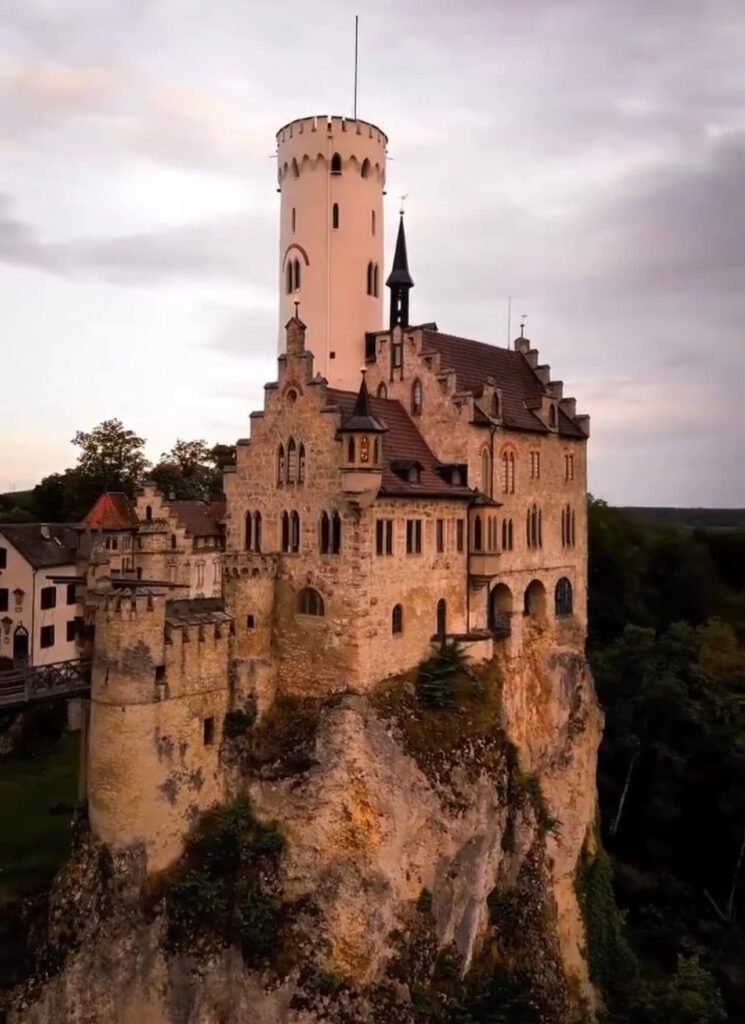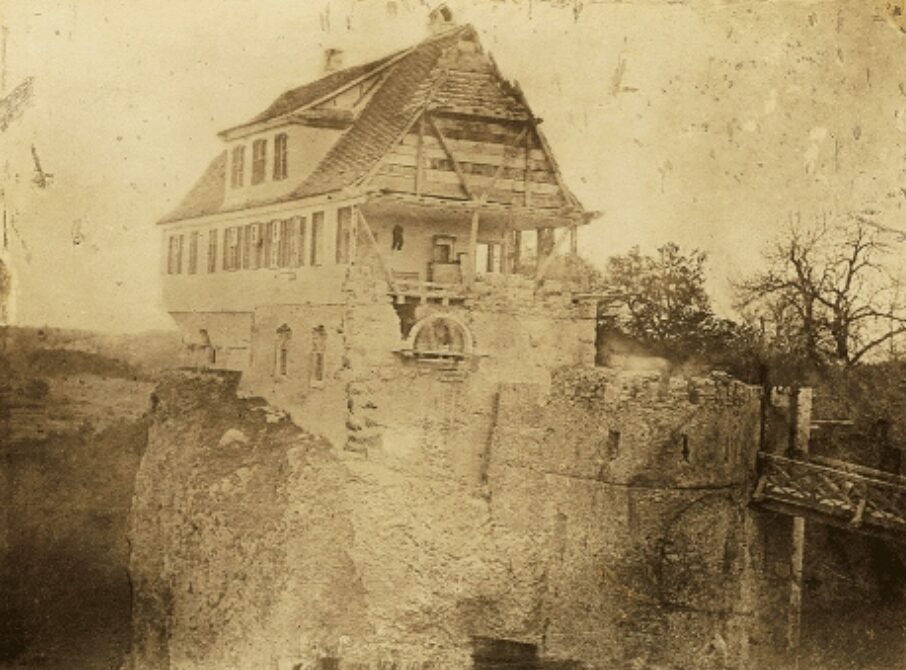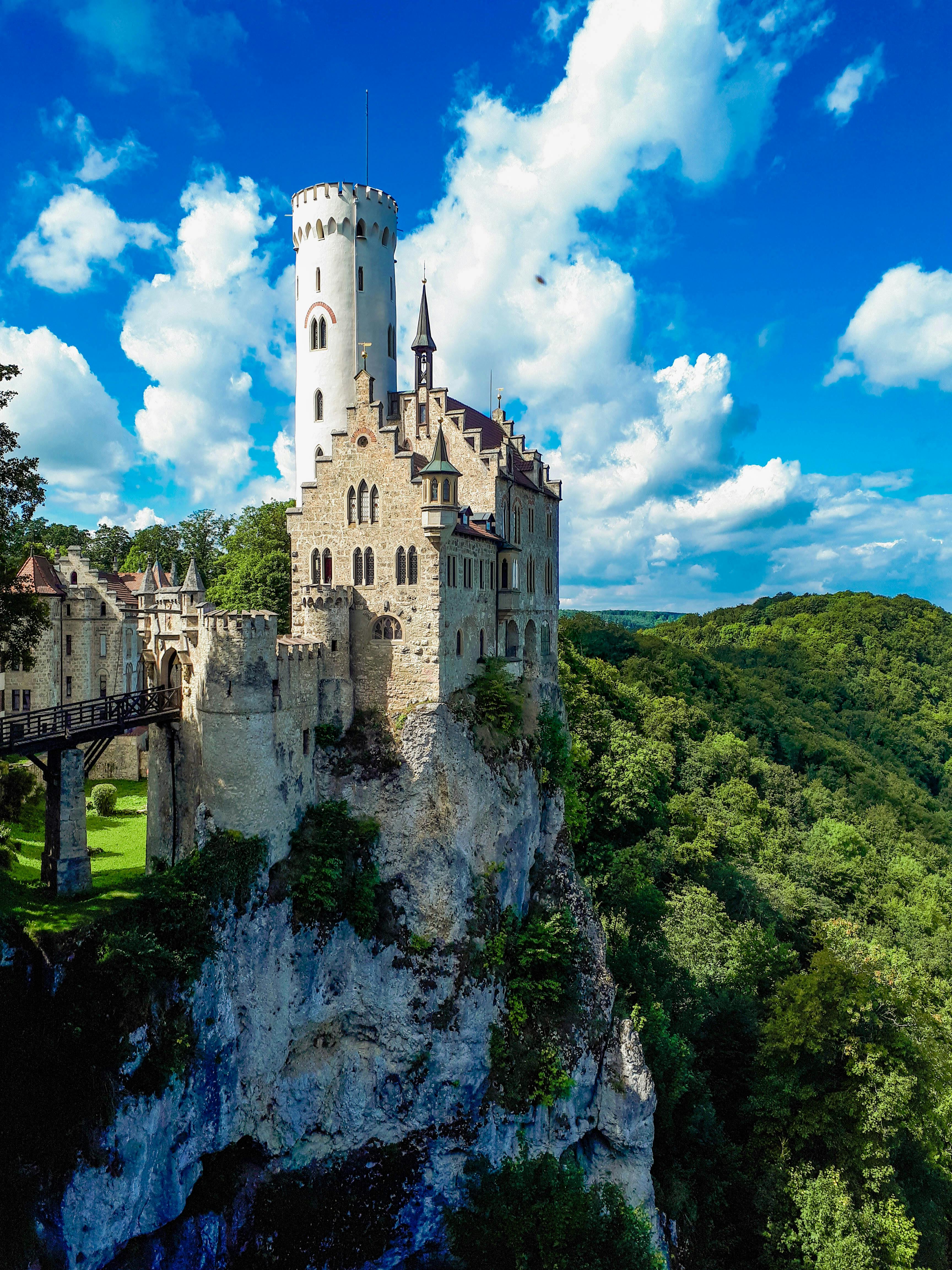Lichtenstein Castle, German Fairytale Escape

Germany is known for its breathtaking castles, but few embody the magic of a fairytale quite like Lichtenstein Castle. Perched dramatically on a cliff in the Swabian Alps, this neo-Gothic masterpiece stands as a testament to both Germany’s rich history and its cultural fascination with medieval romance.
In this article, we’ll explore the fascinating history behind Lichtenstein Castle, a true gem that seems plucked from the pages of a storybook.

The Origins of Lichtenstein Castle
The story of Lichtenstein Castle begins in the early 12th century. During this time, noble families built the first version of the fortress. This structure served as a defensive stronghold for the lords of Lichtenstein. However, conflicts during the Middle Ages, such as the Swabian War in the late 1300s, led to its destruction. Consequently, by the late 16th century, the castle lay in ruins and was abandoned.

In the early 19th century, Lichtenstein Castle experienced a revival. Wilhelm Hauff, a famous German author, wrote a historical novel titled Lichtenstein in 1826. His romantic portrayal of the castle inspired Count Wilhelm of Württemberg to rebuild it in 1840. Eager to create a romanticized version of a medieval fortress, Count Wilhelm commissioned the reconstruction.
Neo-Gothic Revival and the Modern Castle
Count Wilhelm’s vision reflected the neo-Gothic architectural movement that gained popularity across Europe in the 19th century. To realize his dream, he hired architect Carl Alexander Heideloff. Heideloff designed the castle with towers, turrets, and intricate details. Thus, these features blend medieval spirit with fairytale grandeur.

By 1842, builders had completed the new Lichtenstein Castle. Almost immediately, it became known as one of Germany’s most beautiful castles. Its steep, jagged silhouette complements the rugged cliffs of the surrounding landscape. Inside, visitors can explore medieval-style rooms, ornate wood carvings, and collections of weapons and armor. All of these elements reflect the knightly era of the Middle Ages.
Lichtenstein Castle in World War II
During World War II, Lichtenstein Castle largely escaped significant damage. In contrast, many other German castles suffered greatly during this time. Although the military temporarily occupied the structure, it did not suffer major harm. After the war, caretakers restored the castle, and it reopened to the public. As a result, it began attracting visitors from around the globe.
The Castle Today: A Tourist Attraction and Cultural Symbol
Today, Lichtenstein Castle draws thousands of tourists each year. Its picturesque location and storybook architecture appeal to both history enthusiasts and casual travelers. Moreover, visitors enjoy stunning views over the Echaz Valley and can explore the castle’s richly decorated rooms. Additionally, scenic pathways around the castle offer beautiful hiking opportunities. This makes it a perfect destination for history buffs and nature lovers alike.

Conclusion
In conclusion, Lichtenstein Castle symbolizes Germany’s fascination with its medieval past and romantic ideals. From its beginnings as a fortress to its 19th-century rebirth inspired by literature, the castle’s story remains one of transformation and timeless beauty. As one of the most enchanting destinations in Germany, it continues to captivate visitors and offers a glimpse into a fairytale world.
